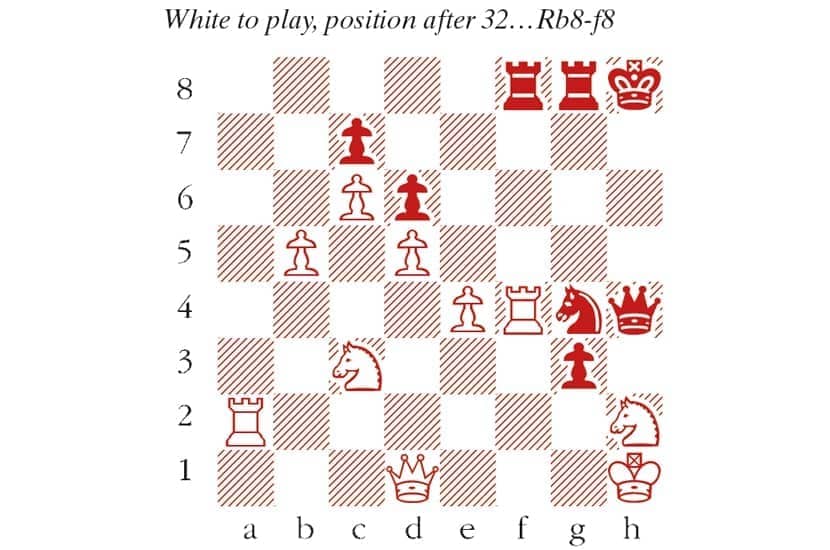Alireza Firouzja produced a momentous performance for France at the European Team Championships, held in Slovenia last month. The 18-year-old, originally from Iran, had taken first place at the Fide Grand Swiss in Latvia just a few days earlier. In Slovenia, his seven wins and two draws was a staggering achievement, earning him an individual gold medal and propelling him to second place in the world rankings. In the overall team standings, it was Ukraine that took gold, finishing narrowly ahead of France on tiebreak.
The England team got off to a shaky start, and we didn’t come close to repeating our bronze-medal-winning performance from the previous edition in 2019. But 22-year-old Ravi Haria made a confident debut, crossing the rating threshold to earn his grandmaster title during the event. Meanwhile, Gawain Jones earned an individual silver medal for a splendid performance on third board. Appropriately, his most exciting game was fought in the Mar del Plata variation (literally, ‘sea of silver’). It is one of the sharpest lines in the King’s Indian Defence, named after the Argentinean city in which Yugoslav grandmaster Svetozar Gligoric won two formative games (against Najdorf and Eliskases) in 1953. The pawn chains, locked at move 11, define the plans for both sides. Strategically, Black’s queenside is a sinking ship, so he must try to deliver checkmate on the kingside before he runs out of pieces.
We knew the match against Denmark would be tight, so this was a risky choice, but not a reckless one. Gawain had studied the variation intensely, since he published in August (on the chessable.com website) the first part of a detailed King’s Indian study course, including substantial analysis of the Mar del Plata variation. Add to that, he was on a roll, having won his previous two games. When you dive into a whirlwind, it’s important to feel lucky.
Jesper Sondergaard Thybo-Gawain Jones
European Team Championship, Slovenia, November 2021
1 d4 Nf6 2 c4 g6 3 Nc3 Bg7 4 e4 d6 5 Nf3 O-O 6 Be2 e5 7 O-O Nc6 8 d5 Ne7 9 Ne1 Nd7 10 Nd3 f5 11 f3 f4 12 b4 g5 13 c5 Nf6 14 a4 h5 15 a5 Ng6 16 Nf2 Kh8 17 a6 bxa6 18 c6 Rb8 19 Bxa6 g4 20 Bxc8 Qxc8 21 b5 Bh6 22 Rxa7 Nh4 23 fxg4 Rg8 24 Kh1 hxg4 25 g3 Nf3 26 Nxg4 This appears to extinguish the attack, but Black’s next two moves breathe fresh life into it. Nxh2 27 Nxh2 Qh3 Introducing numerous ideas: fxg3, Ng4, while Rxg3 would threaten Qg2 mate and hit the knight on c3. The complications are bewildering, but it is always harder to handle the side whose king is under fire. 28 Rf3 fxg3 29 Ra2 Ng4 29…Bxc1 seems to be stronger. 30 Bxh6 Now, White can defend after 30…Nxh2 31 Rxg3 Rxg3 32 Rxh2, so the next move renews that threat. Qh4 31 Bf4 White has defended well, but here 31 Rxg3! was called for. Then 31…Qxg3 32 Nxg4 Rxg4 33 Rh2 Rh4 34 Qg1 Rxh2+ 35 Qxh2 Qf3+ 36 Kg1, meeting 36…Rg8+ with 37 Bg5+. exf4 32 Rxf4 Rbf8 Sitting at the adjacent board I wondered, against 33 Rxg4, what Gawain might have in mind? With relief, I spotted the ace up his sleeve: 33…Rxg4 34 Qxg4 Rf1+ 35 Kg2 Rf2+! 36 Rxf2 Qxh2+ 37 Kf1 Qxf2 mate. 33 Qd4+ The decisive error. White had to play 33 Qf3, which seems to lead to a draw with best play, e.g 33…Rxf4 34 Qxf4 gxh2 35 Rxh2 Qxh2+ 36 Qxh2+ Nxh2 37 Kxh2 Kg7 and Black’s king reaches the queenside just in time. Kh7 34 e5 gxh2 35 Qd3+ Kh8 36 Rxf8 36 Rxg4 Qe1+ 37 Kxh2 Rxg4 and White’s king won’t last long. Rxf8 37 Qd1 Qh3 White resigns






Comments